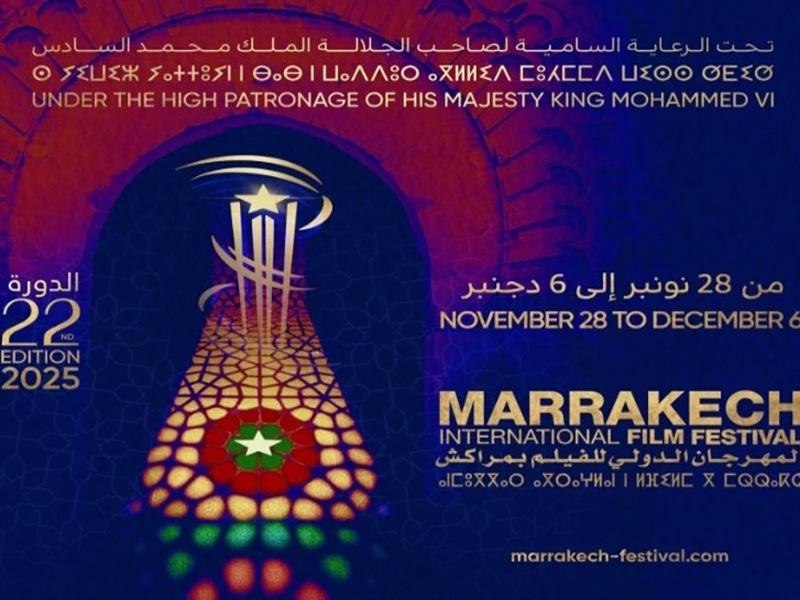
Circuit 8

KASBAH AIT BEN HADDOU
It is a Ksar of Morocco known all around the world, listed as word landmark from UNESCO in 1987, close to the heights of the Atlas in Ouarzazate,. It's a stunning example of the traditional south of Morocco, built on the side of hill. There was on top of the hill of collective grain loft (Agadir). The village is a mud-made set of constructions, surrounded by walls. The ksar is a typical pre-saharan-traditional housing complex.
The house are grouped within walls that are reinforced with defensive towers. All around the "douar", you can see a number of small villages. Ait Benhaddou has been built close to a river running across the valley. The locals are mostly Berbers, ancient nomads who chose to settle there.
Bivouac LA PALMERAIE

Riad KSAR IGNDA

SULTANA ROYAL GOLF

Hôtel de FINT

BERBERE PALACE

Hôtel IBIS

KASBAH DAR DAÏF

ECOLODGE OUEDNOUJOUM

Microarchitecture
In serval places in the Anti-Atlas, the shaping of sludge carbonte rocks from the Ediacaran(-570 to - 542 million years ago) and from the Cambrian (-542 to -488 my) has created serval sculptures that are true masterpieces of nature, typical of the region. The genesis of these sculptures was conditioned by several parameters 1/ the long length of erosion 2 / the deversity of erosion process 3 / the lithological and strtigraphic nature of carbonate rocks 4 / the joints.
RIAD AIN KHADRA

Hôtel DAR ZITOUNE

PALAIS SALAM

RIAD TAFILAG

LES BAINS BERBERES

PARADIS d'Aguinane

EYE OF ZITRI
A virtual navigation of southern Morocco, using the sites “maps” at low altitude, allows us to appreciate the beauty of many “geological monuments” which is a geological heritage to be known to the general public. Among these monuments quoted as “eye of Zitri”, their morphogenesis originates from the shaping by erosion of Paleozoic formation. The iris of the eye is rich in hematite, which is of color red.
Tagmoute to Akka Ighan :
Of Tagmoute ,60 km of track(29°02’09.82’’N_9°27’36.55’’W) Take a track of Ait Yacoub up to the road Akka Ighan Taliouine (60 km of track).
Hôtel Bab Rimal

HIBA

Hôtel IRIKI

SABLE D'OR

Hôtel El FAYJA

Gîte L'OASIS

The Grottos of Messalite
At 7 km to the north of Tata (towards Tagmoute), we can visit the grottos of Messalite (29°48,75'N 07°59,35'W) by taking the road of Tagmout , going through the zaouia of Agadir Lhena (29°46,15'N 07°59'W) where from, the top of the village, you have a great view on the Afra and Tata palm grove. The grottos, that can be reached only be foot, are in front of the car park along the wadi. They are deep with important stalagmites and stalactites formations.
Tagmoute :
At 40 km from Tata, go to Tagmoute by road (29°01'51.06" N 9°27448;60" W), at the village entrance, take a very nice viewing track where you can visit an agadir when leaving.
TAGMOUTE

DAR Infiane

LA RENAISSENCE

RALAIS Des Sables

The Siren of the desert
In the Anti-Atlas more than a dozen of geological monuments have been identified including "the Siren of the desert" located at 23 km from the ESE of Tata (29°40'41.24"N 7°43'44.23" W), its morpjogenesis result from the shaping process of erosion of a folded structure. The site have 4 sedimentary cycles called Rich 1, Rich2, Rich3 and Rich4, each of which begins with limestone overlain by shade and finishes with sandstone with intercalations of shale. The arcade shape we observe within this geological monument is the result of a process of morphogenetic erosion of type "ironer".
sBivouac Nomade

Maison Chez Lahcen

ThE SALTED WATERFALLS OF TiSSiNT
At 69 km eastward of Tata (towards Ouarzazate), you can discover the salted waterfalls of Tissint (29°54,34’N 07°18,93’W) where you can take a fresh bath.Under the waterfalls children can bath, in summer in a greater water plan. Using the same way it is possible to visit the house where Charles de Foucauld has stayed
Auberge le Safran

Auberge Souktana

Auberge Askaoune

Le toubkal

Le Zagmouzene

Karst Of Imitek
A Karst means all limestone hills shaped by water infiltration generating deep caves, sinkholes and underground rivers and on the surface various geomorphosites often spectacular among which the Karst of Imitek.
It is located 30 km west of Tata and near Imitek. The joints allow the penetration of surface water, which loaded with carbon dioxide, start the digging process. Thus we will be able to observ "domes", "standing stones", "lapiaz" or "karren".
Sally's

Octopussy

Kasbah de Tabelkoukt

Dar najmat

Aftas Trip

Les trois chameaux

Camp surf

Ecolodge Oasis Bab el Oued

Maison d'hôte Casaroja

Auberge Kasbah Ennakhile

Dar Talhaya

Dar Ait Hmid

Riad Ma Bonne étoile

La petite Kasbah

Villa Sidi Rbat Massa

Villa Maroc

Gîte Tine Tafoukt

Résidence Fanti

La palemeraie de Massa

Mon Eden a votre porte de main

Maison traditionnelle Oued Massa

Maison d'hôte Ksar Massa

Kasbah Tizougran

Hotel Targant

Gîte Takoucht

Gîte Oceant et Nature

Gîte la Dune

Gîte Amakhir

Gîte Dar El Yasmine

Centre d'accueil Douira

Camping Takat

Camping Sidi Wassay

B&B/ Surf Accommodation

Camping Bakanou

Résidence Atlantic

Gite Associatif N'toubkal

Hotel El Adrissa

Camping Wassay Beach

Dar El Yassmine

HISTORY AND CULTURE:
We know today that most of the civilization trends which have been detected in Sahara reached its north border and even then the mountains of the Moroccan South.
The first occupants were blacks which presence has been certified by the engravings of Tassili (5th century BC).
Various white populations make up the Berber (called Lybico-Berber) Mediterranean who lived in Spain, Morocco, Moroccan Sahara and Canaries.
Palestinian charmite came by sea and land.
Semite arrived by emigration waves (10th century BC) searching for gold, silver or copper mines, either by sea or through desert.
Thus, Berber seams to have received from Mediterranean and Egypt their eldest element of civilization.
In 622, comes the islamic era. From 670, Oqba Ibn Nafi, at the head of the first arabic conquerors army, arrives in The Maghreb and founds Kairouan. In 681, he will mount a raid as far as Draâ and Souss. In 710, Moussa Ibn Noussair receives submission of the whole of The Maghreb in care of the caliph Omeyyade from Damas.In 786, Idriss the 1st, descendent from Ali, prophet’s son-in-law runs away from Arabia and finds a place of refuge in Morocco; as from 788, he has been recognized iman by Berber from Morocco.
Almoravide Dynasty 1055-1144 : The nomadic Berber almoravide warriors progress to the North, found Marrakesh in 1070 which becomes the capital of the kingdom, to who it gave its name : Morocco.
Amohade Dynasty 1130-1269 : The capture of Marrakesh in 1147 makes an end to the conquest of Morocco by the Almohades (the Unitarians). Abd el-Moumen manages to unify North Africa.
Merinide Dynasty 1269-1471 : the Beni Merin from Zenetes, coming from the Moulouya basin seizes Fes, Rabat, Sale and Abdou. Youssef Yacoub takes over Marrakesh in 1269.
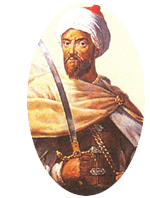 The Cherifan movements : Since 1508, the Portuguese compete with the transaharan trade. Coming from the Beni Saad arabic tribes, Mahomet descendants, originating from the Drâa Valley, the Saadian cherif el-Kaim resists to the Portuguese as from 1509. The Cherifan power is officialized when Marrakesh got seized in 1525.
The Cherifan movements : Since 1508, the Portuguese compete with the transaharan trade. Coming from the Beni Saad arabic tribes, Mahomet descendants, originating from the Drâa Valley, the Saadian cherif el-Kaim resists to the Portuguese as from 1509. The Cherifan power is officialized when Marrakesh got seized in 1525.
In 1578, the Saadan secures the gold road control by seizing Timbuktu and the Niger loop.
The Alaouite Dynasty : Birth of the Cherifan empire. Native from the Chorfa from Tafilalet, Ali descendant, the dynasty imposes its authority as from 1666. Moulay Ali Cherif, its founder, and its successors reunify Morocco and founds the Cherifan empire which spreads its authority as far as Senegal. To strengthen its external relations, he treats Louis the 15th and Jack the 2nd from England as equals.
Guelmin- Es Smara area : Spreads over a surface of 142 380 km², that is to say almost 20% the kingdom area. Strengthen by its priviledged geostrategic position, the variety of its natural sites, the area gathers all the ingredients of a center of tourist developments on a large scale.It is more than 170 kms of Atlantic coast (Guelmin and Tan-Tan districts), from where la plage Blanche spreads over 40 kms, Oued Chbika, also its hot springs. The area has actually at its disposal important potentials, its various natural scenery and the richness of its cultural heritage thanks to the mixing of Hassani and Berber cultures and traditions.
TOURIST ATTRACTIONS :
The oasis from the communes of Taghijt, Asrir, Tighmert, Ifrane of the Anti-Atlas and Timoulay include several tourist appeals : the Ksours and Kasbahs, the historical sites along the wadi Noun and at Kahf Lahmam (pigeons grotto) in the commune of Ait Bouflen, the Igoudas or collective shops (Amtoudi) and the cave engravings.
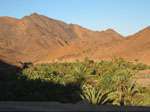 The palm groves from the district of Tata (Akka, Tata, Foum Zguid) and from the district of Assa-Zag (Assa) count among the most important ones in the south of Morocco (more than a million palm trees that is to say 20% of date palm national heritage).
The palm groves from the district of Tata (Akka, Tata, Foum Zguid) and from the district of Assa-Zag (Assa) count among the most important ones in the south of Morocco (more than a million palm trees that is to say 20% of date palm national heritage).
The hot springs, notably the ones of Abaynou and Aïn Lalla Mellouka the water is renown for the treatment of dermic and rheumatic illnesses, which have therefore curative effects.
THE WADI MOUTHS :
Foum Assaka, tourist interest site attracts already the tourist professionals. This coast of great views and ecological richness is the subject of tourist vocation.
Foum Draâ, isolated site and difficult to accede by track from the national road RN1. It sets out a remarkable views quality with varied fauna. The site has been the subject of a detailed analysis of a future tourist development as part of a study on a tourist area schedule and development which will number 8 000 beds.
In addition of the mouths, the wadi surroundings towards the inside offer a tourist attraction potential a not inconsiderable one which arouses the investors interest from the tourist sector. It is the case, notably, of a french property developer who has built a hotel unity at Fort Boujrif (rural commune of Targawassay- commune of Guelmim) who knows an important success by attractring more than 400 tourists from different nationalities by month. Same thing for the Ksar of Tafnidilt located along the Draâ wadi and which knows the same success, the station Abaynou, eco Musée of Tighmerte. 2 other implementations Dar Infiane at Tata and the Akka Nait Sidi VIP bivouac (rural commune of Tissint) are to be mentioned for the same original concept and for its success.
Plage Blanche, this unity would be developed at 50 kms from the south of Ifni and at 60 kms from the south-east of Guelmim. Its particularity will be of being the first eco tourist seaside resort with 30 000 beds capacity.
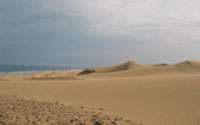 Hotel units ( 5* and 4* hotels and villages for tourist holidays) for about 5 300 beds capacity. An 18 holes golf, an commercial and craft center, a SPA and leisure implementations.
Hotel units ( 5* and 4* hotels and villages for tourist holidays) for about 5 300 beds capacity. An 18 holes golf, an commercial and craft center, a SPA and leisure implementations.
Residential unities for a total 10 500 beds capacity, about 2 200 flats and villas. The Fades group estimated that the works would last 8 years, the first hotel is planned to open its doors on 2012.
The National Park “Bas Draâ” is one of the most important national park, with a desert landscape and low human density. It constitutes an ideal biotope for a diversified and rich fauna nearly dying out (gazelles, dorcas, cuffed wild sheeps, carnivores including the striped hyena, jackal, red fox, fennec, porcupine, as well as birds as bustard, lancer falcon, the royal eagle, adding on reptiles). It is a biodiversity of high interest potential.
Chbika wadi, Foum Chbika site, at about 30 kms from the south of El Ouatia The convention on the installation of the tourist station «oued chbika «in tan tan,entrusted to the Egyptian group»orascom»has required an amount of 6 billions dirhams.the project which will contribute to the creation of 2.500 jobs,consists of the realization of hoteliary units with a capacity of 5.000beds,of residences(1.851units),ludic and sporting infrastructures(centre of congress,museum,and a sport center).
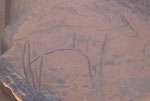
The cave engravings from the Tata district to the Es-Smara district, the first discoveries of cave art date back the 19th century.
At present, we number more than 300 sites spread over the whole territory.
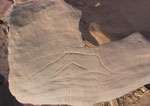 This sites, in which prehistoric men used to engrave, are often on the open-air and in general, located on the wadis side.
This sites, in which prehistoric men used to engrave, are often on the open-air and in general, located on the wadis side.
As per its geographical location, they can be classified into three concentrations :
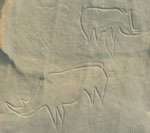 the Haut-Atlas plateau, along the Draâ valley and next to the dried-up wadis of the saharan districts. The cultural heritage of Morocco is represented through all of these periods from prehistory (from ancient Palaeolithic to Neolithic) to history, going by protohistory.
the Haut-Atlas plateau, along the Draâ valley and next to the dried-up wadis of the saharan districts. The cultural heritage of Morocco is represented through all of these periods from prehistory (from ancient Palaeolithic to Neolithic) to history, going by protohistory.
Some sites are the subject of active archeological researches. It allows us to distinguish the different stages of Morocco history over about one million years period. Cave art is one of the component of Moroccan historic heritage. During almost 8 000 years, men used to engrave magnificent “paintings” onto sandstones to illustrate the activities of day-to day life and its beliefs
 The pigeons grotto, (going to Agadir), some researchers discovered perforated sea molluscs Nassirius type, in the pigeons grotto at Tafoghalt, an area known for its magnificent grottos, human heritage treasures lying hidden.
The pigeons grotto, (going to Agadir), some researchers discovered perforated sea molluscs Nassirius type, in the pigeons grotto at Tafoghalt, an area known for its magnificent grottos, human heritage treasures lying hidden.
Dated from 82 000 years, these are pieces numbered among the eldest, representing ornaments in the world and putting Morocco as a country where civilization aroused long ago before other parts of the world.
They indicate very clearly, as per great specialists who have received this discovery, that humans have used symbols in Africa, 40 000 years before Europe.
As per one of the scientifics : “such a discovery allows to close the meeting on the african origines about the items of ornaments and put North Africa, and notably Morocco, as one of the eldest centers of distribution of ornaments items in the world”.
The pigeons grotto ornament is elder than what has been discovered before in Algeria, in South Africa and in Palestine.
HOSPITALITY :
The savoir-vivre begins by different ways to welcome vistors with what is immediately available and presentable :
Milk, symbol of the purity of the intentions, peace desire; refreshing drink, tasty and nutritive. The most important is goat, camel or cow milk
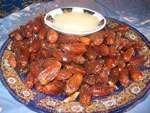 Dates (local palm grove products) go usually with the milk. Sweet, they equilibrate the blandness of the milk, scrape out the dust of the road which lay in the throat, perfumes nicely the breath and prepare to word exchanges. Tea, usually made with mint, national drink, is the first constant in welcoming tradition, from the most humble to the richest.
Dates (local palm grove products) go usually with the milk. Sweet, they equilibrate the blandness of the milk, scrape out the dust of the road which lay in the throat, perfumes nicely the breath and prepare to word exchanges. Tea, usually made with mint, national drink, is the first constant in welcoming tradition, from the most humble to the richest.
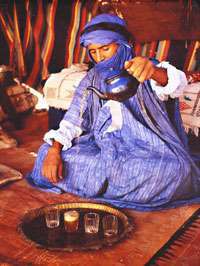 There is no home where a visitor won’t be served one, indeed several, glass of tea. It’s a meeting factor, a catalyst, communing symbol, rarely offered on
There is no home where a visitor won’t be served one, indeed several, glass of tea. It’s a meeting factor, a catalyst, communing symbol, rarely offered on
its own: it is served with batbout (small bread slightly risen), msemen (pancake with fat and baked in a terracotta dish).It can also go with
different types of cakes or biscuits, indeed, extreme pleasure, fresh bakedbarley or wheat bead. Lamriss, very well known drink in the sahara area, is a mix between cooked
floor and water adding a bit of sugar; very refreshing drink, moreover in summer and when there is no milk.
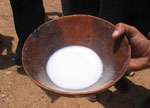 Zrig, very well known in the area. It is a mix of milk, water and a bit of sugar, with sometimes some yogurt.
Zrig, very well known in the area. It is a mix of milk, water and a bit of sugar, with sometimes some yogurt.
How can we talk about welcoming and hospitality without making reference to its corollaries : savoir-vivre and art of cooking ?
L'ARTISANAT :
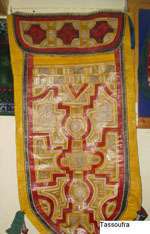 L’artisanat dans la région est le reflet d’un passé d’une civilisation spirituelle et matérielle.
L’artisanat dans la région est le reflet d’un passé d’une civilisation spirituelle et matérielle.
Entre tradition et modernité, l’artisanat de la région s’ouvre sur les nouvelles technologies et prend la place qui est la sienne dans l’économie régionale en tant que facteur d’équilibre socio-économique.
Domaine privilégié de la micro-entreprise, l’artisanat est un secteur d’activités important par le chiffre d’affaires qu’il génère et par la main d’oeuvre qu’il emploie (plus de 11000 artisans dans les différentes filières d’artisanat d’art et de service). Dans toutes les provinces, vous découvrirez : la bijouterie, la maroquinerie traditionnelle, le bois, la couture traditionnelle, le tissage de tapis, les pierres fossilisées, la vannerie (province d’Assa-Zag et de Tata), la poterie (province de Tata).
 The cooperative is composed of twelve (12) members seven (7 women and five (5) men) ...
The cooperative is composed of twelve (12) members seven (7 women and five (5) men) ...
AJIAL Cooperative
 7 women compose it, it is presided by Mrs. Mariam Ait Said ...
7 women compose it, it is presided by Mrs. Mariam Ait Said ...
INTERACTIVE MAP ENVIRONMENT ASSOCIATION
NB : Click on the icons in the map to view information for each item.
HISTORY AND CULTURE
We know today that most of the civilization trends which have been detected in Sahara reached its north border and even then the mountains of the Moroccan South...
Read more...TOURIST ATTRACTIONS
The oasis from the communes of Taghijt, Asrir, Tighmert, Ifrane of the Anti-Atlas and Timoulay include several tourist appeals...
Read more...THE WADI MOUTHS
Foum Assaka, tourist interest site attracts already the tourist professionals. This coast of great views and ecological richness is the subject of tourist vocation...
Read more...HOSPITALITY
The savoir-vivre begins by different ways to welcome vistors with what is immediately available and presentable...
Read more...CRAFT
Craft in the area is the reflect of a spiritual and material civilization past. Between tradition and modernity...
Read more...


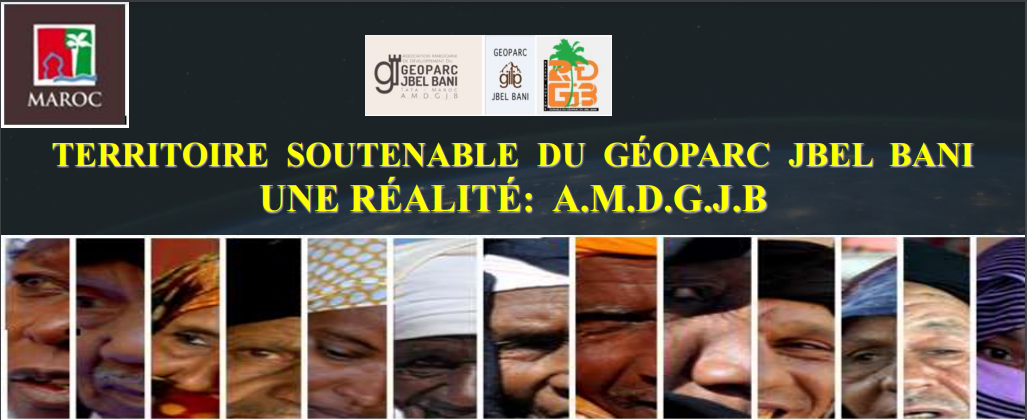
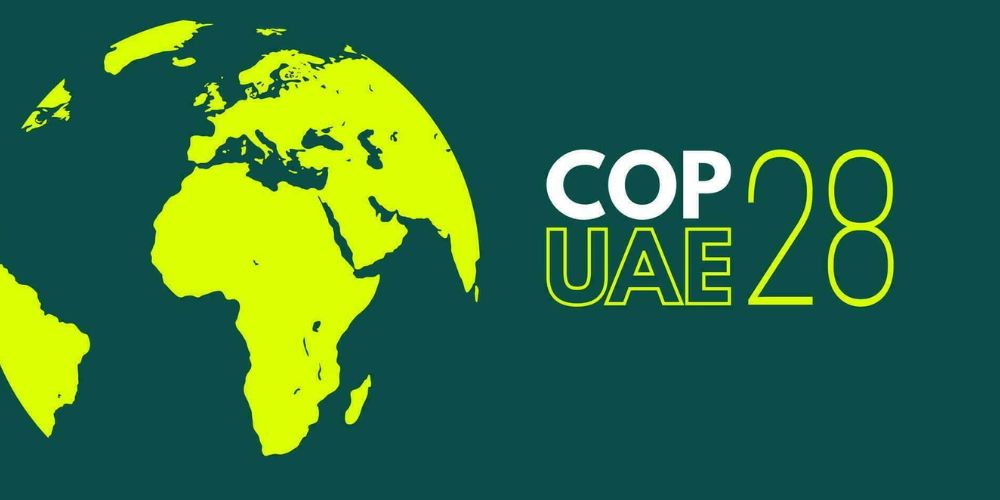
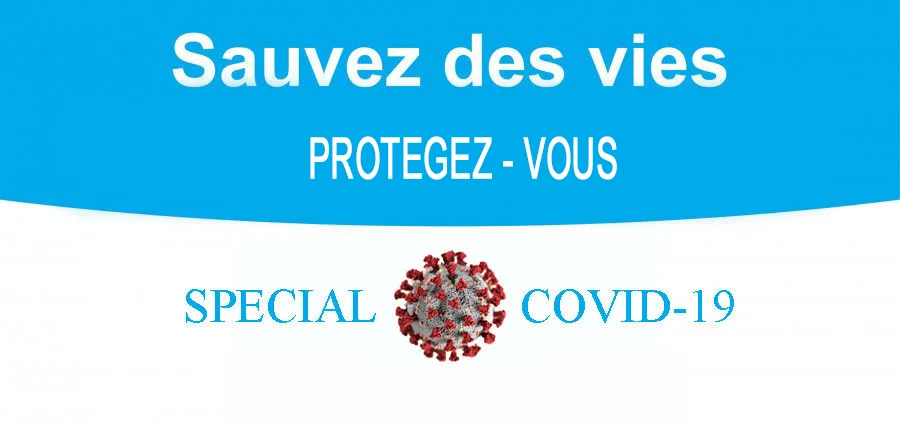

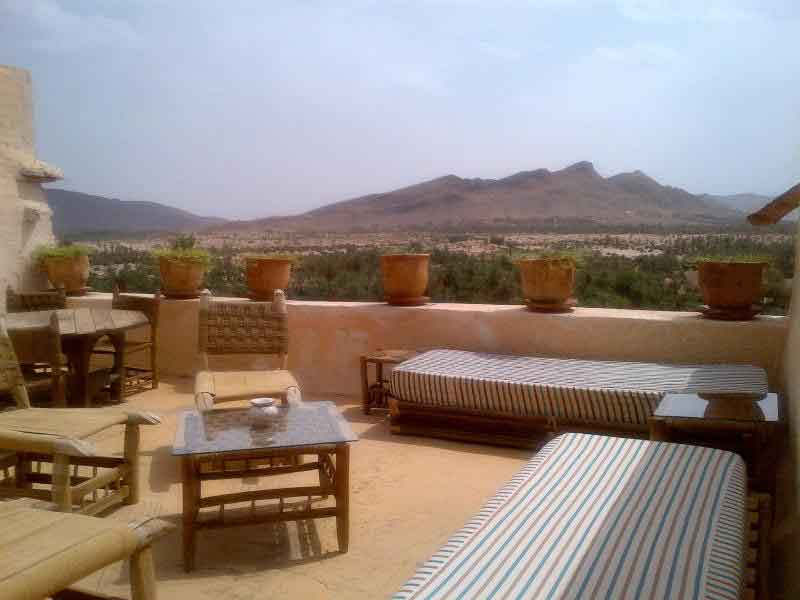

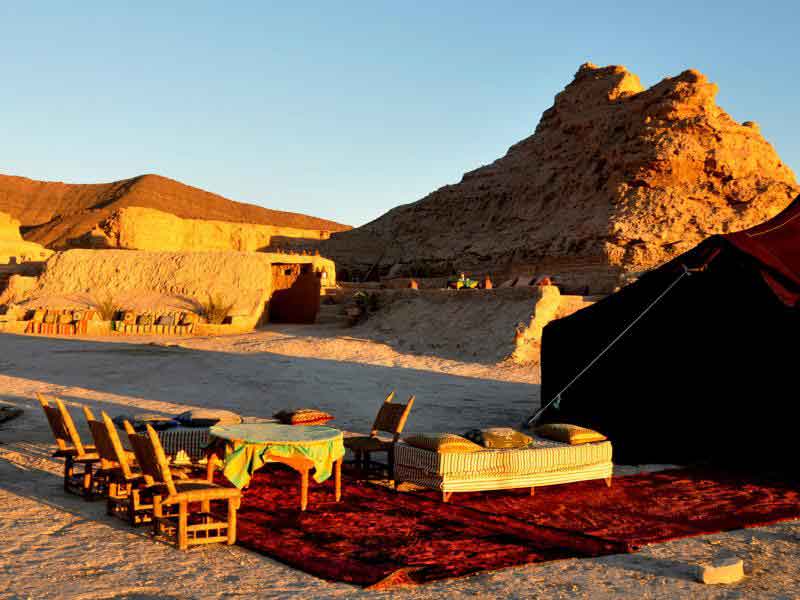
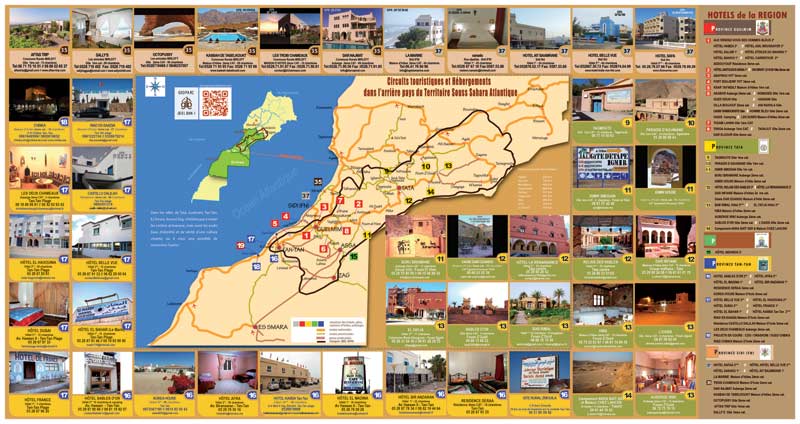
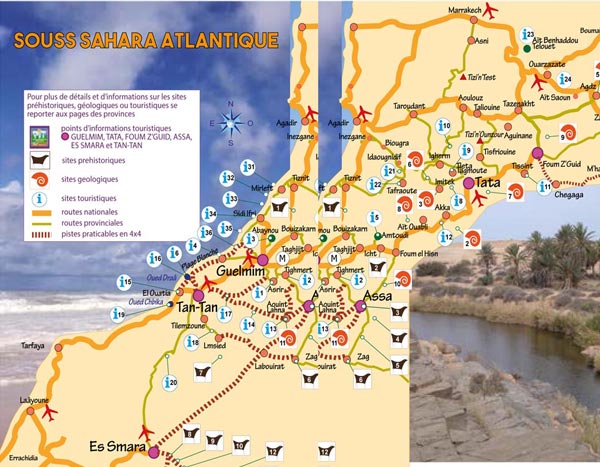
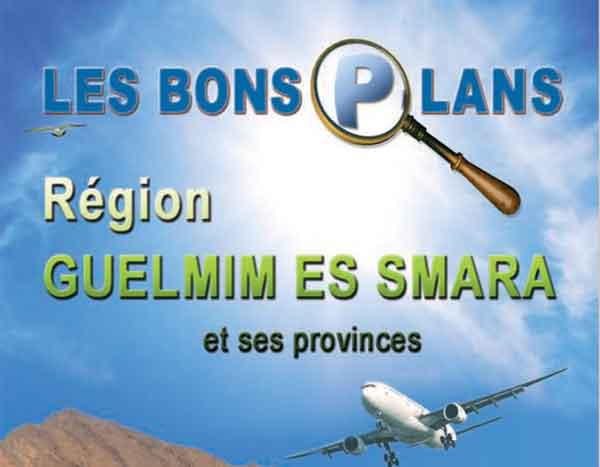
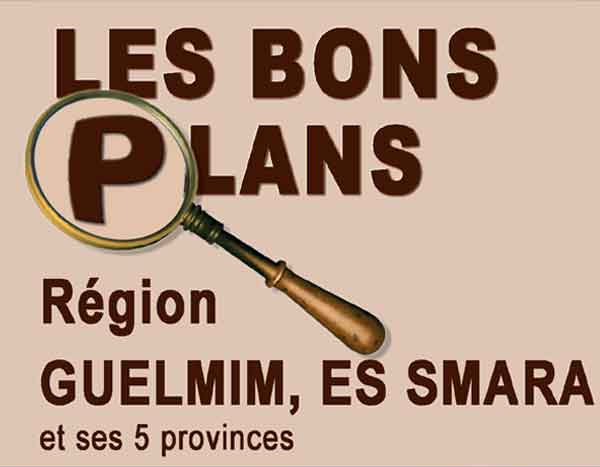
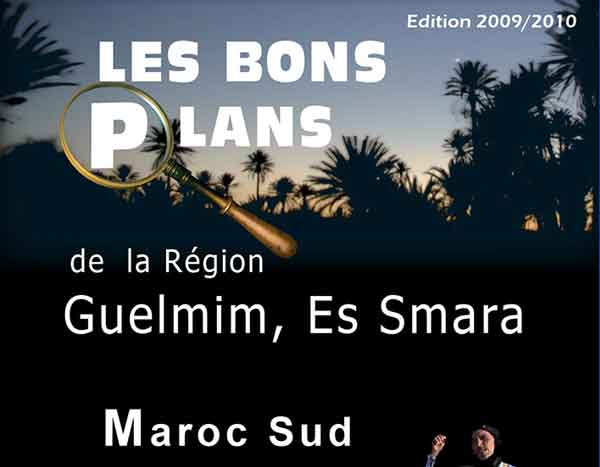
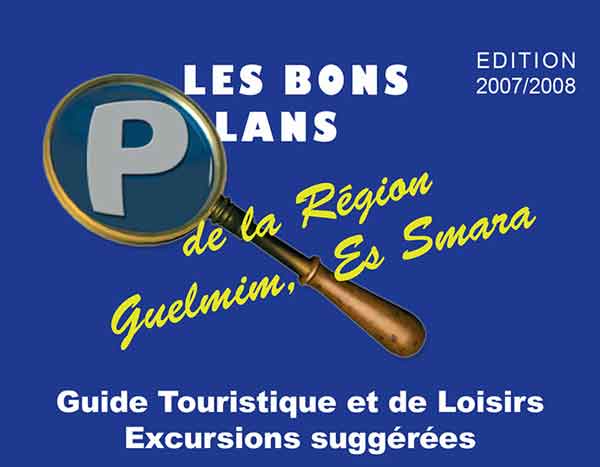
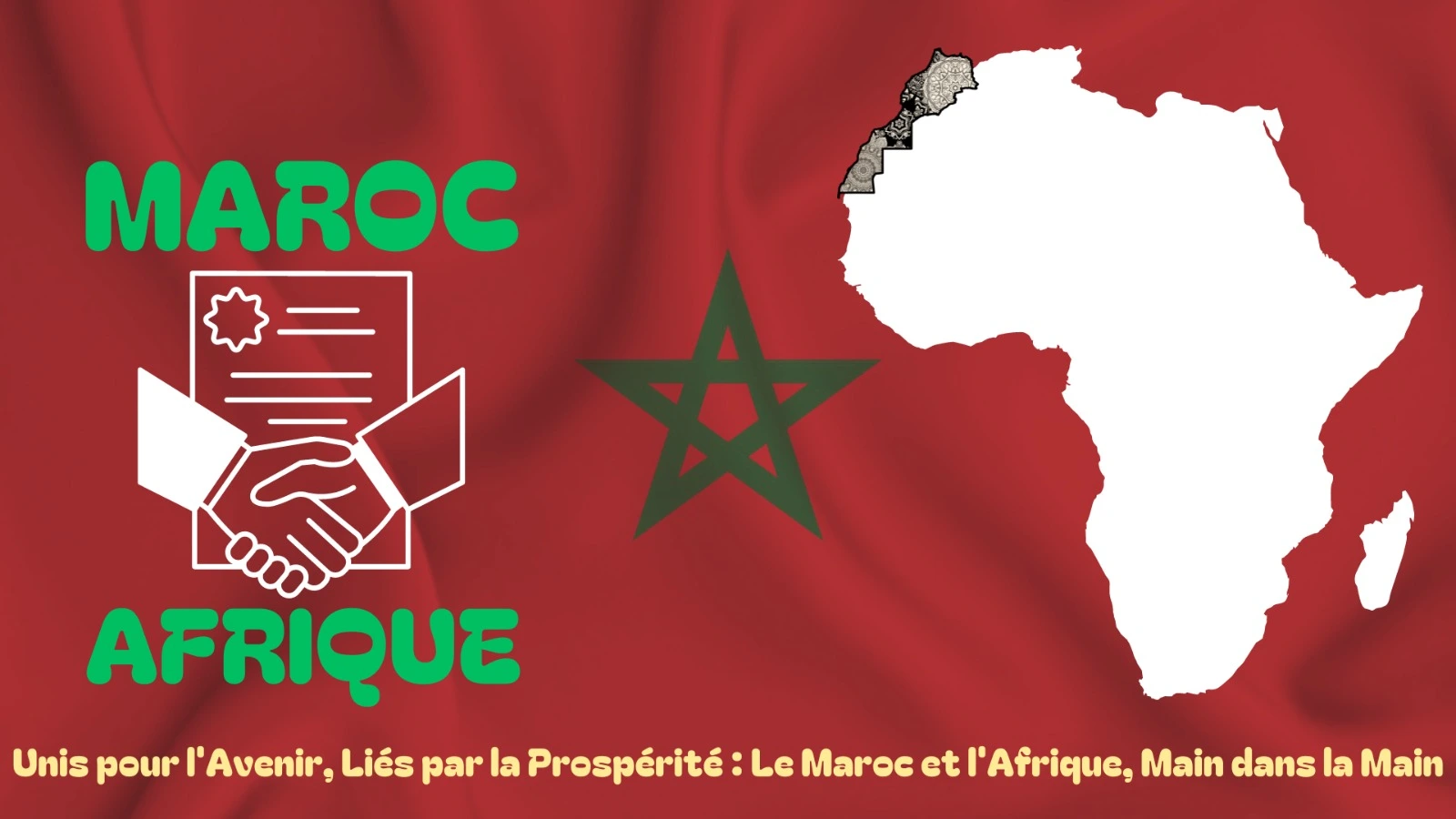
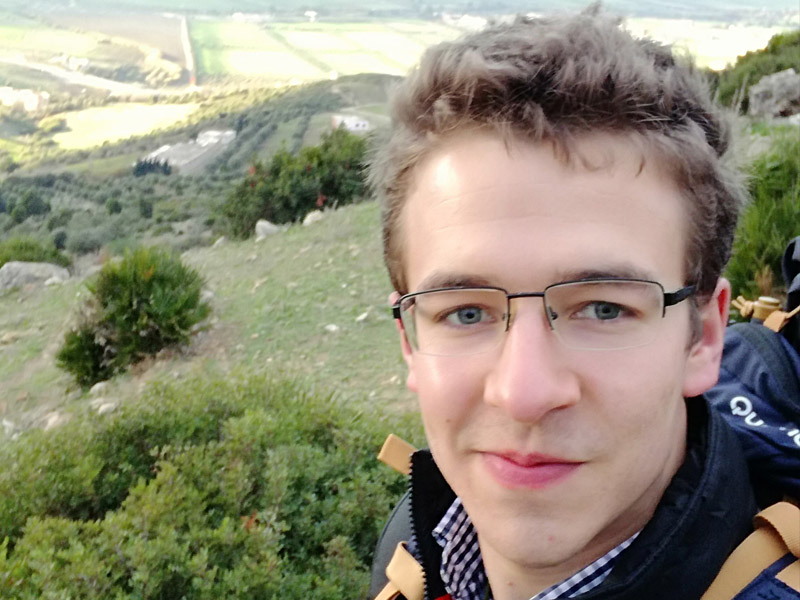
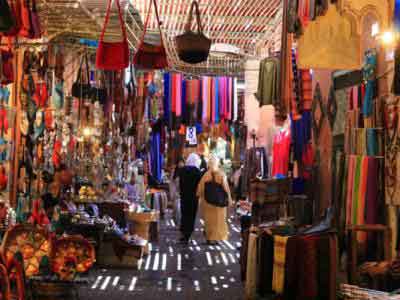
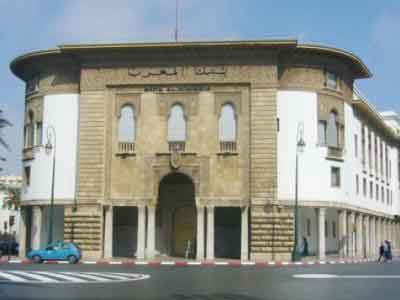
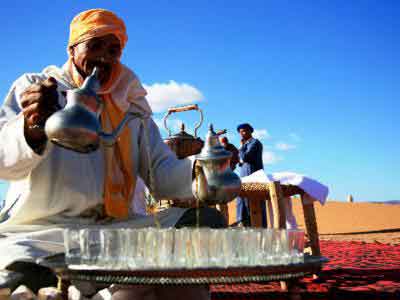


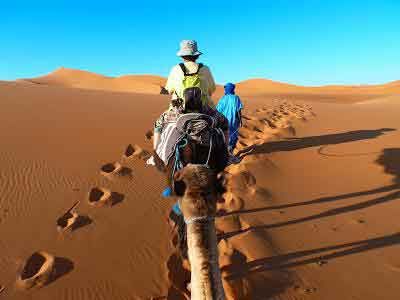
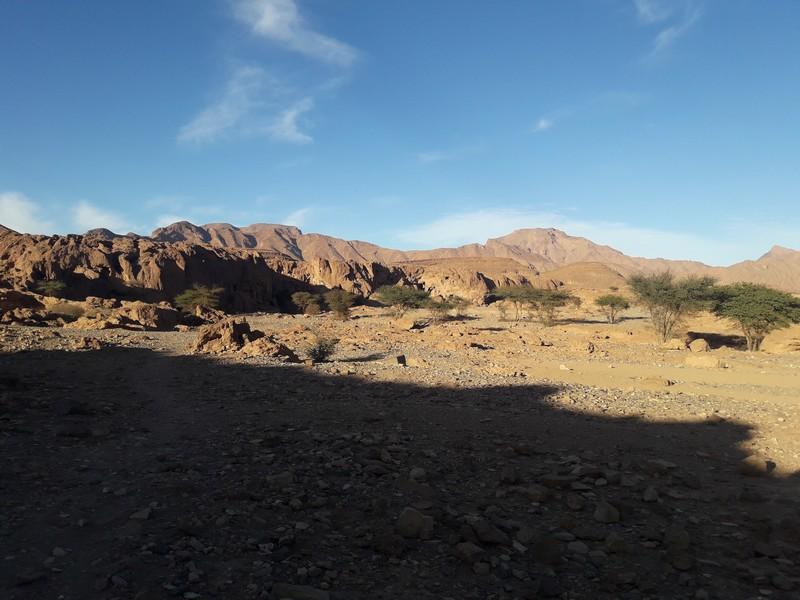
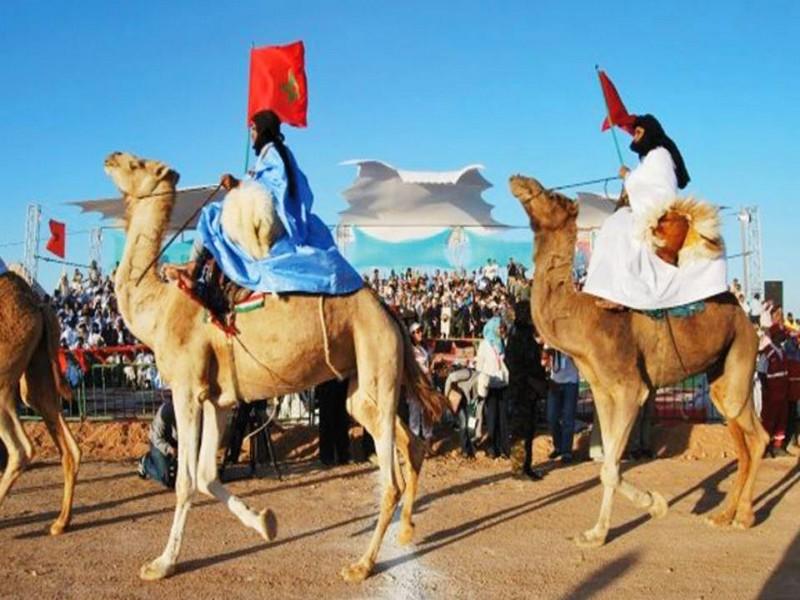
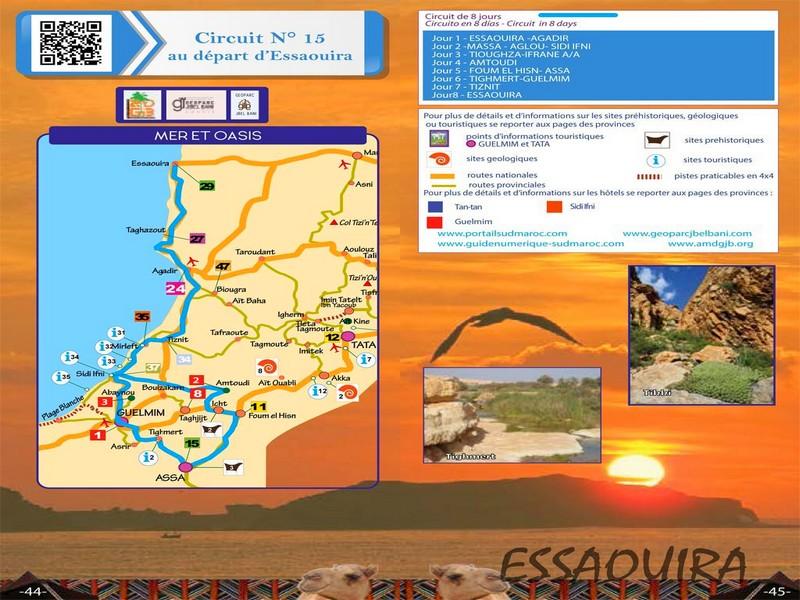
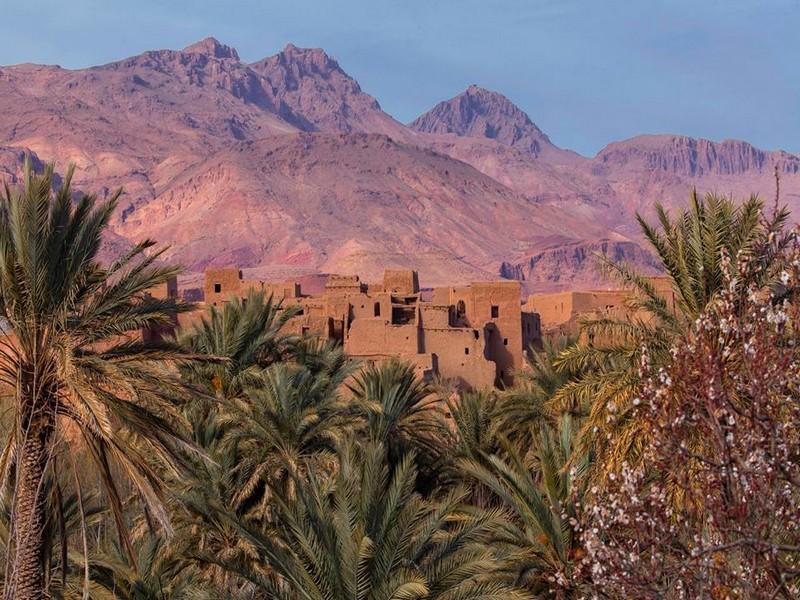
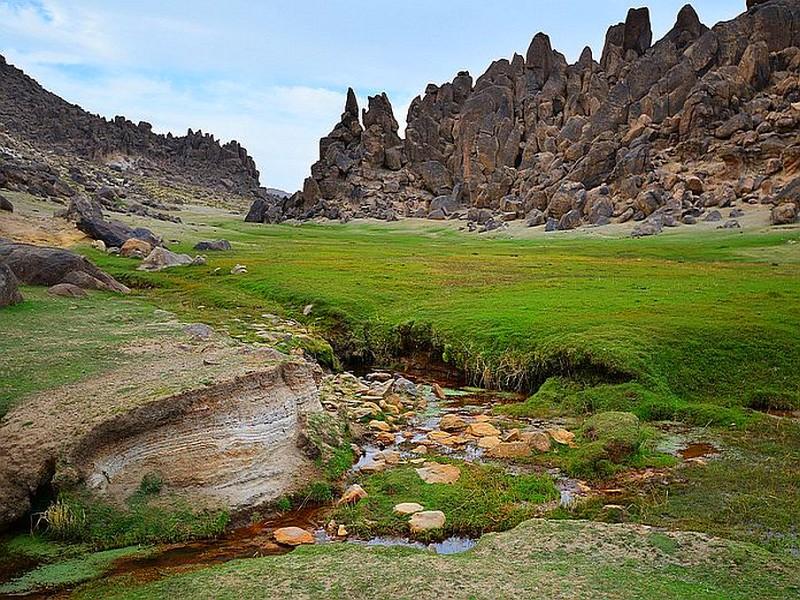
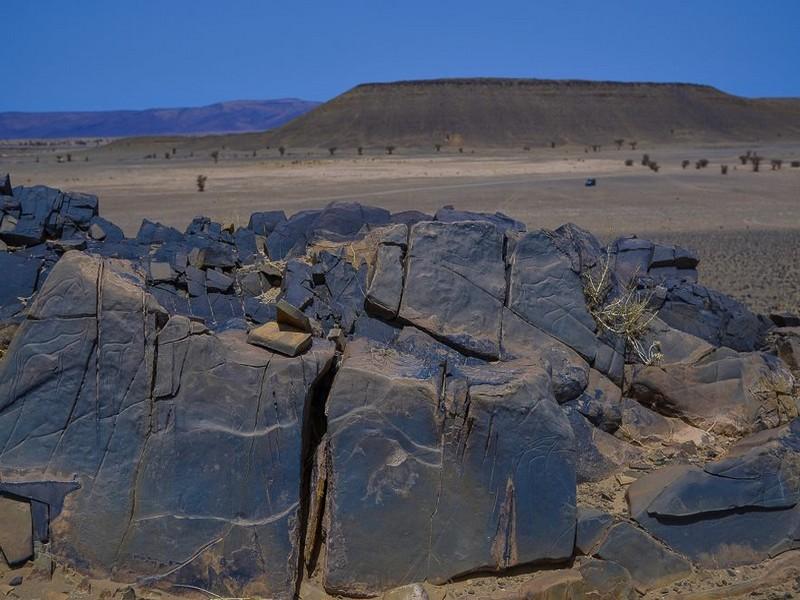
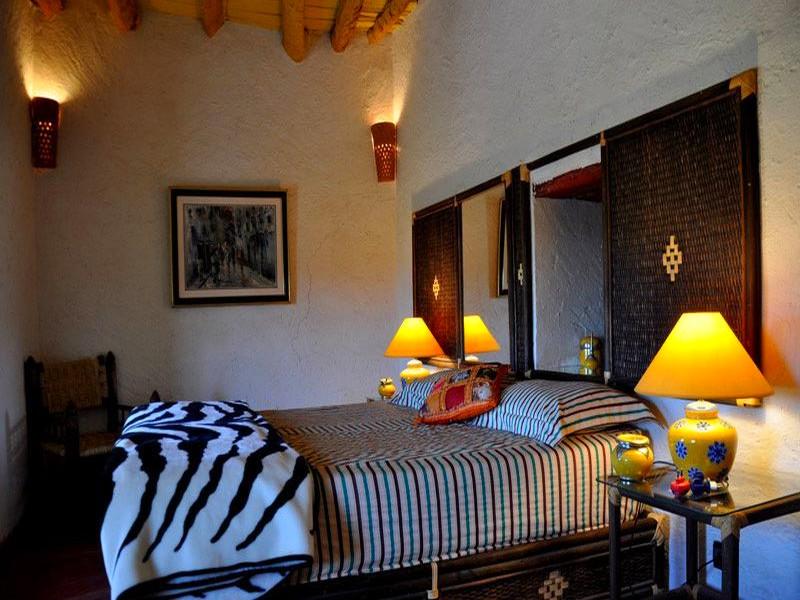
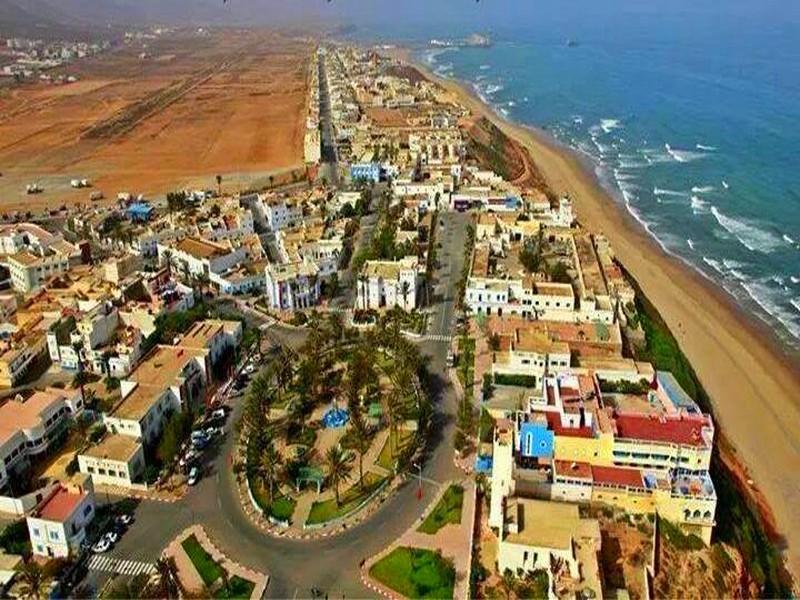
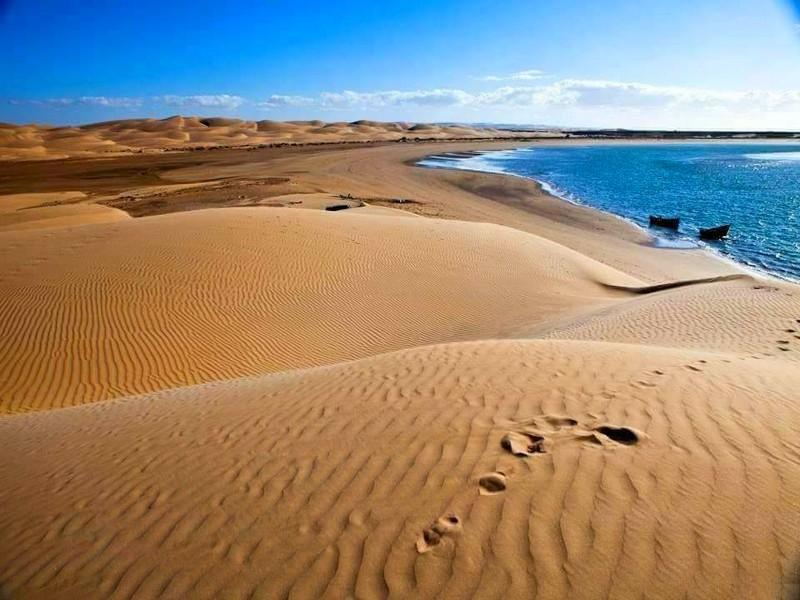
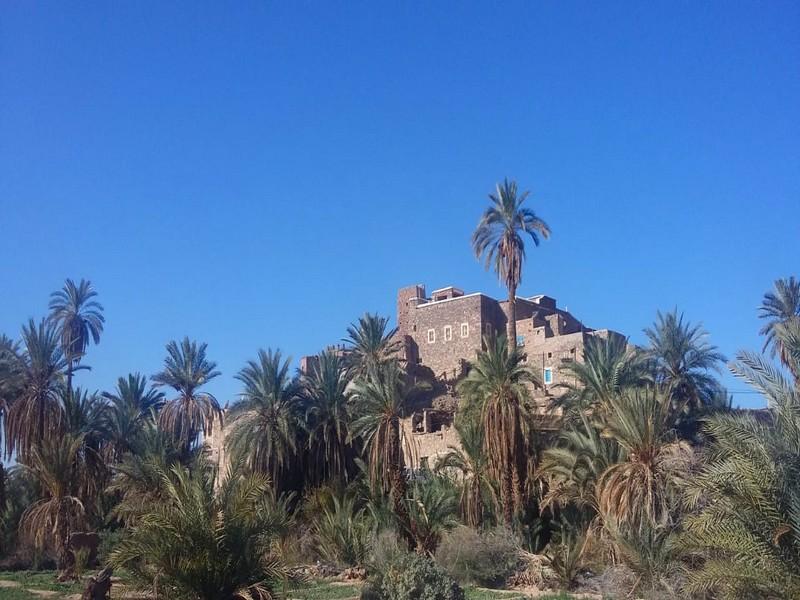
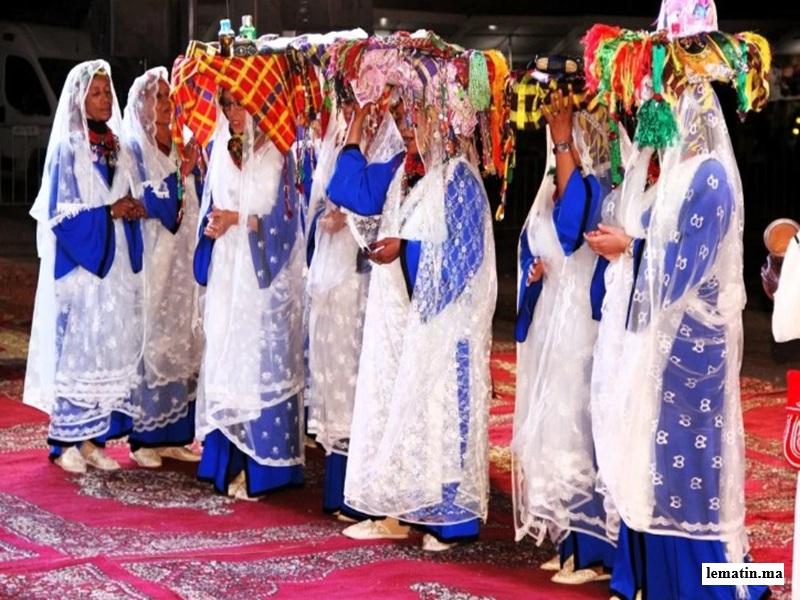
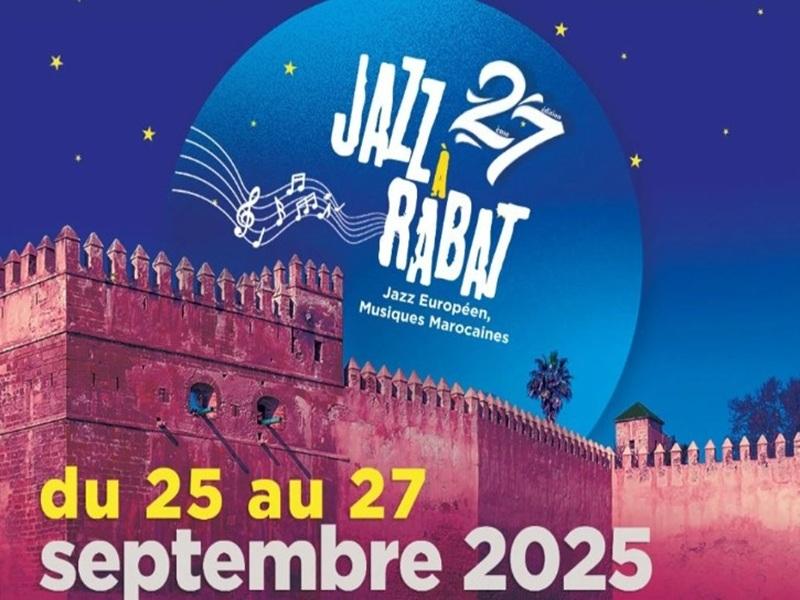
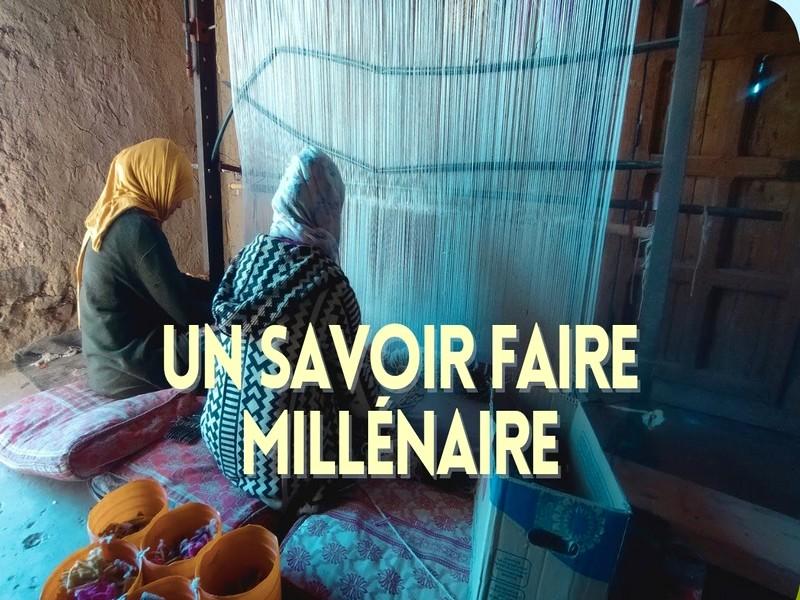
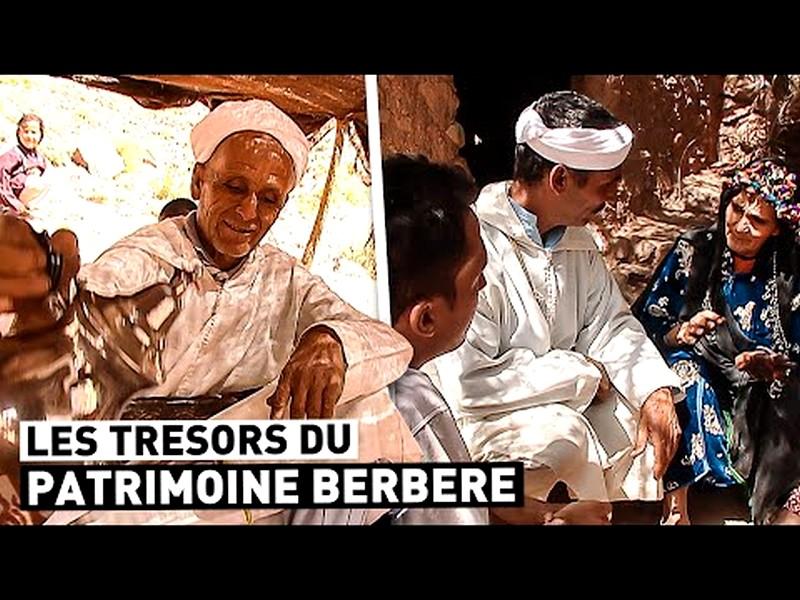
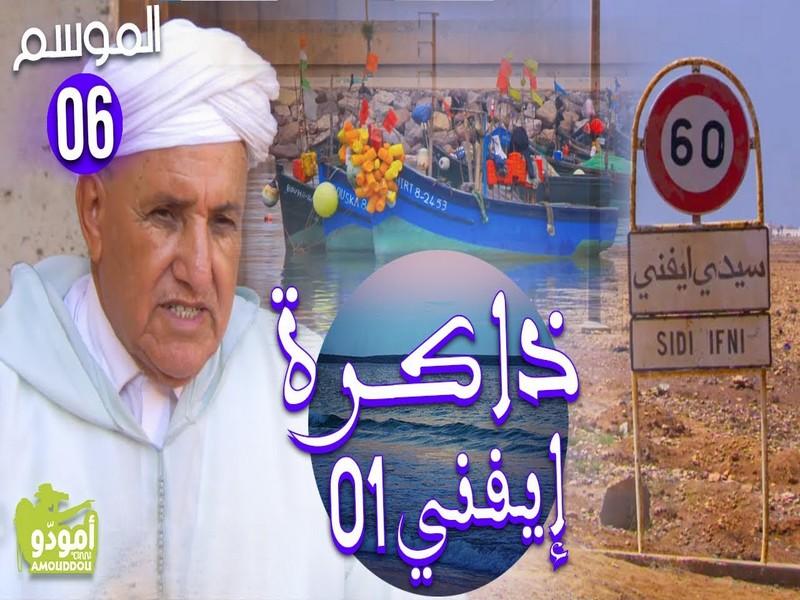

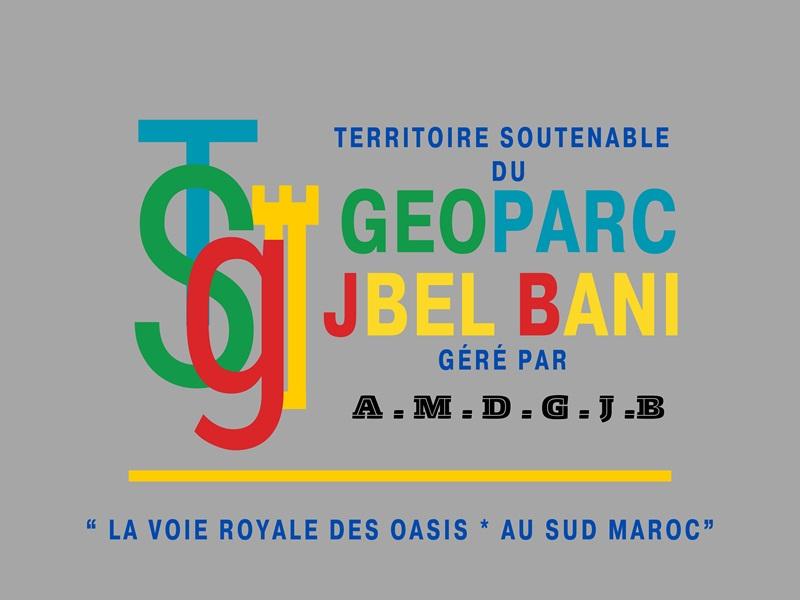
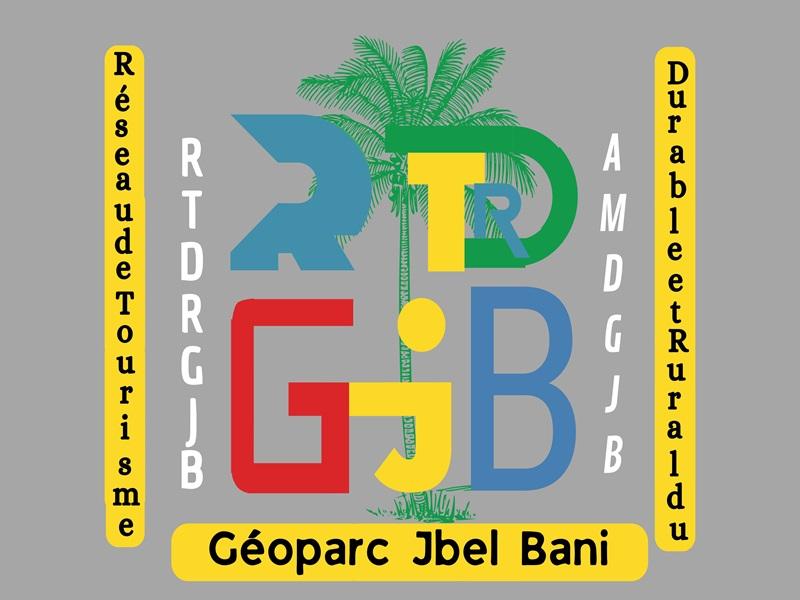
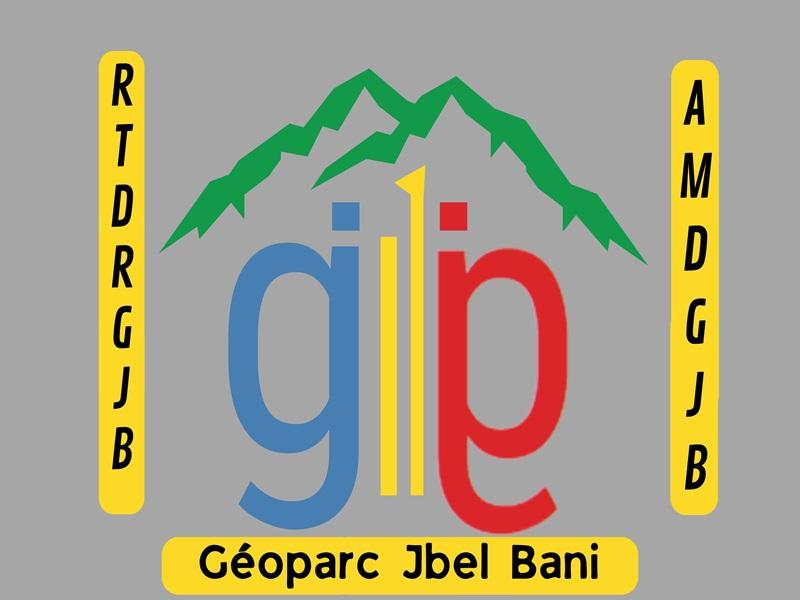
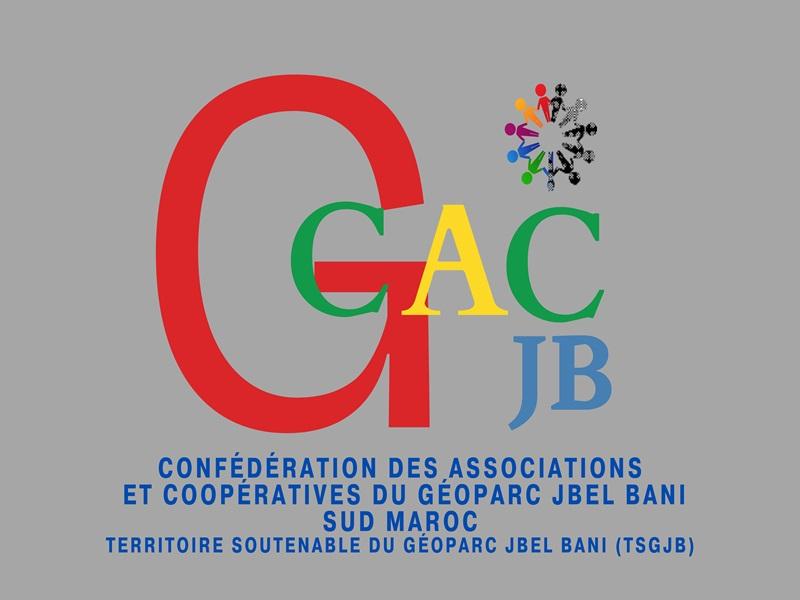
 Découvrir notre région
Découvrir notre région